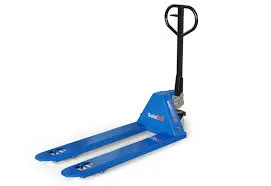


Understanding Industrial Fall Protection Devices
In various industrial settings, the safety of workers is paramount. One of the significant hazards workers face, especially in construction, manufacturing, and warehousing environments, is the risk of falling from heights. Statistics reveal that falls are among the leading causes of workplace injuries and fatalities. To combat this peril, industrial fall protection devices have become essential. This article delves into the types, functions, and importance of these safety devices in the workplace.
Types of Fall Protection Devices
Industrial fall protection equipment can be categorized into several types, each designed to safeguard workers based on the specific circumstances of their tasks
. The primary categories include1. Personal Fall Arrest Systems (PFAS) PFAS are designed to stop a worker from falling once a fall has occurred. These systems typically consist of a harness worn by the worker, lanyards, and a secure anchor point. When properly used, PFAS can effectively reduce the distance a fall would occur and mitigate the forces exerted on the body during the fall.
2. Guardrails and Safety Nets Permanent guardrail systems are often installed on edges of platforms, roofs, and scaffolding. They serve as a physical barrier that prevents workers from falling. Safety nets, on the other hand, are employed in scenarios where it is impractical to use guardrails, capturing falling workers and reducing the risk of injury.
3. Lifelines and Harnesses Lifeline systems, which can be horizontal or vertical, allow workers to move freely while secured to a harness. These systems often involve rope or cable that supports workers as they navigate elevated workspaces, ensuring that they remain attached to a stable point.
4. Positioning Devices Positioning devices, such as belts and harnesses, keep workers in place while allowing them to work hands-free. These devices are especially useful for workers who need to perform tasks at height but require both hands free, such as in maintenance or construction tasks.

Importance of Fall Protection Devices
The implementation of industrial fall protection devices is critical for several reasons
1. Worker Safety The primary purpose of fall protection devices is to enhance worker safety. By minimizing the risk of falls, these devices save lives and reduce the severity of injuries sustained from falls. This is not merely a moral or ethical responsibility; it is a legal obligation in many regions that enforce workplace safety regulations.
2. Cost-Effectiveness While the initial investment in fall protection systems and training may seem substantial, the long-term savings can be significant. Workplace injuries from falls can lead to costly medical expenses, increased insurance premiums, and lost productivity. By investing in proper fall protection, companies can save considerably on potential costs associated with workplace accidents.
3. Regulatory Compliance Many countries and jurisdictions have specific regulations concerning fall protection. Government bodies such as the Occupational Safety and Health Administration (OSHA) in the United States set guidelines that organizations must follow to maintain compliance. Failure to adhere to these regulations can result in fines and increased scrutiny from regulatory bodies.
4. Improved Workplace Culture When organizations prioritize safety through the use of appropriate fall protection measures, it fosters a culture that values employee well-being. Workers are more likely to feel secure and appreciated in an environment where their safety is taken seriously, leading to increased job satisfaction and morale.
Conclusion
Industrial fall protection devices are crucial elements in maintaining workplace safety and preventing injuries. With various options available, ranging from personal fall arrest systems to guardrails and safety nets, employers can select the most suitable devices based on their specific operations and risk factors. Ultimately, the implementation of fall protection systems not only protects workers but also promotes a culture of safety, regulatory compliance, and cost-effectiveness within the industrial sector. Investing in fall protection devices is investing in the workforce, ensuring that every individual can return home safely from work each day.



